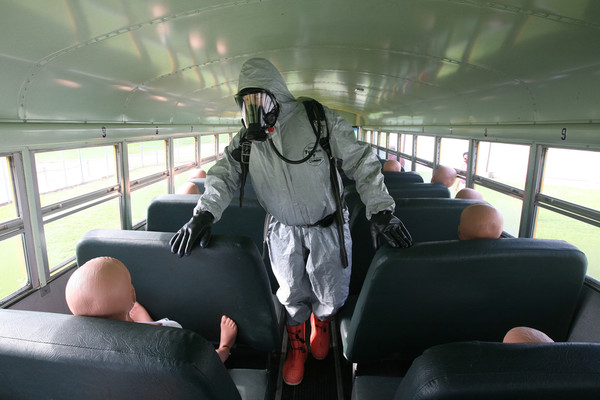
Check the scene and the victim
Before providing any help, you should first check the scene and the victim. This step of the emergency response has two parts – checking the scene and checking the victim. Checking the scene always comes first. Do not rush to the victim without doing a primary scene survey, or you may end up becoming a victim as well.
Check the scene: Before providing first aid to the victim, make sure the scene is safe for you and for other people within the immediate area. Take some time to check the safety of the place, try to determine what happened, the number of victims, and if there are bystanders who can help.
Look around for possible threats to your safety, the victim and bystanders. Possible dangers include traffic, downed electric lines, fire, smoke, violent behaviors, a hostile crowd, extreme weather, dangerous fumes, biochemical products, and falling rocks. If any of these threats are present, do not approach the victim, stay in a safe place, and call 911 or nearby first responders (such as firefighters, police, and other authorities tasked to ensure community safety). You do not want to become another victim and create more work for the rescuers. It is more prudent to stay away from danger and leave it to professionals who have the necessary training and equipment to deal with them.
While checking for possible risks, try to determine what happened. Look around for clues as to the cause of the emergency and the extent of the injuries. Look carefully as there may be more than one victim. You may not see all victims at the first look. Ask the victim or any witness about how many individuals may be involved.
As you approach the victim, continue to look around for potential threats. It is possible to see other dangers that are not apparent from a distance. You may also find more clues as to what happened.
Check the victim. Carefully check the victim for all possible injuries. Aside from injuries sustained in the accident, also assess for symptoms of illnesses or other conditions. Make a head-to-toe assessment, be particular with medical alert bracelets.
If the victim has any serious, life-threatening condition, call EMS right away. There are four conditions that may signal a life threatening emergency: unconsciousness, difficulty of breathing or no breathing, no pulse, severe bleeding.
If you are a certified or trained first aider, introduce yourself to the victim. Speak calmly and confidently but do not alarm the victim. State your name and tell the victim you are a trained first aider, and ask if you can help. These words can provide reassurance to the victim. Although emergency situations require immediate emergency care, you still need to ask the permission of the victim for you to help, unless the victim is unconscious and no one is around. If a conscious victim refuses, do not give care. However, in most cases, victims are receptive of help, especially if they know the one helping them is a trained first aider.
